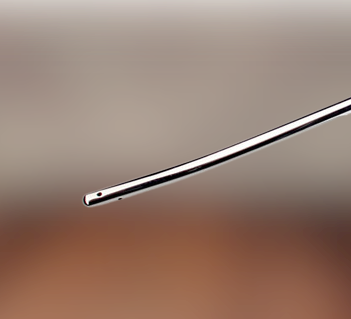What is Fallopian tube dredging? - Procedure Steps, Indications, Complications,
What is Fallopian tube dredging?
A medical procedure called fallopian tube dredging aids in the conception of females who have obstructed or damaged fallopian tubes. A specific solution is used during the treatment to clean out any obstructions or debris from the fallopian tubes.
Because of their function in transporting the egg from the ovary to the uterus, the fallopian tubes are a crucial component of the reproductive system in women. Conceiving becomes challenging or impossible if the tubes are obstructed or damaged and prevent the egg from reaching the uterus.
Dredging of the fallopian tubes can be performed in a doctor's office and is a relatively easy and non-invasive process. The majority of women are able to resume their regular activities right away following the procedure, which doesn't include anesthesia or a hospital stay.
However, the success rate of fallopian tube dredging varies from case to case and is dependent on the degree of blockage. In some situations, a woman may require additional reproductive therapies to aid in conception.

Procedure Steps
The process for fallopian tube dredging includes the following steps:
- In order to do a pelvic exam, the patient will be requested to lie down on a table and place their feet in stirrups.
- A speculum will be inserted by the physician into the vagina to view the cervix.
- To lower the possibility of infection, the cervix will be cleansed with an antiseptic solution.
- A slender, flexible catheter will be inserted into the uterus through the cervix.
- The fallopian tubes will be flushed by an injection of a specific solution through the catheter.
- To make sure the solution reaches every part of the fallopian tubes, it may be injected under pressure.
- After the solution is injected, the tube will be taken out and the patient will be given a few minutes to rest.
In most cases, the patient can go home soon after the treatment and get right back to their daily routine.
The procedure is often carried out in a doctor's office or fertility clinic, and it typically lasts 30 to 60 minutes. The majority of women do not need anesthesia for the procedure, though they may experience moderate discomfort or cramping during the injection of the solution. Talk to your doctor if you have any worries or questions regarding the procedure.
Indications
Fallopian tube dredging may be recommended for women with obstructed or damaged fallopian tubes, which can occur for a number of reasons. Fallopian tube dredging is typically performed for the following reasons:
Infertility
Infertility in women is frequently brought on by blocked or damaged fallopian tubes. A blocked fallopian tube makes pregnancy more challenging or impossible since the egg cannot make its way from the ovary to the uterus.
Pelvic inflammatory disease (PID)
PID is an infection that affects the female reproductive system, including the fallopian tubes. PID can lead to scarring and obstructions in the tubes if treatment is not sought for the condition.
Endometriosis
Endometriosis is a condition in which the lining of the uterus grows outside of the uterus, resulting in scarring and obstructions in the fallopian tubes.
Infertility of unknown cause
When there is no obvious reason for infertility, fallopian tube dredging may still be advised in some situations. This could be carried out as the first stage in the process of fertility treatment.
Complications
As with any medical treatment, dredging the fallopian tubes may come with some risks and possible complications, though they are rare. Fallopian tube dredging may result in some issues, such as:
Infection
Following the procedure, there is a slight chance of infection, especially if the patient has an infection that already exists.
Bleeding
There may be some light bleeding after the procedure, especially if the patient has a history of excessive menstrual flow.
Perforation
During the procedure, there is a small chance of uterine or fallopian tube perforation or puncturing.
Allergic response
Patients may, in extremely unusual circumstances, develop an allergic reaction to the fluid that is used during the treatment.
 Reviewed by Simon Albert
on
May 06, 2023
Rating:
Reviewed by Simon Albert
on
May 06, 2023
Rating:











